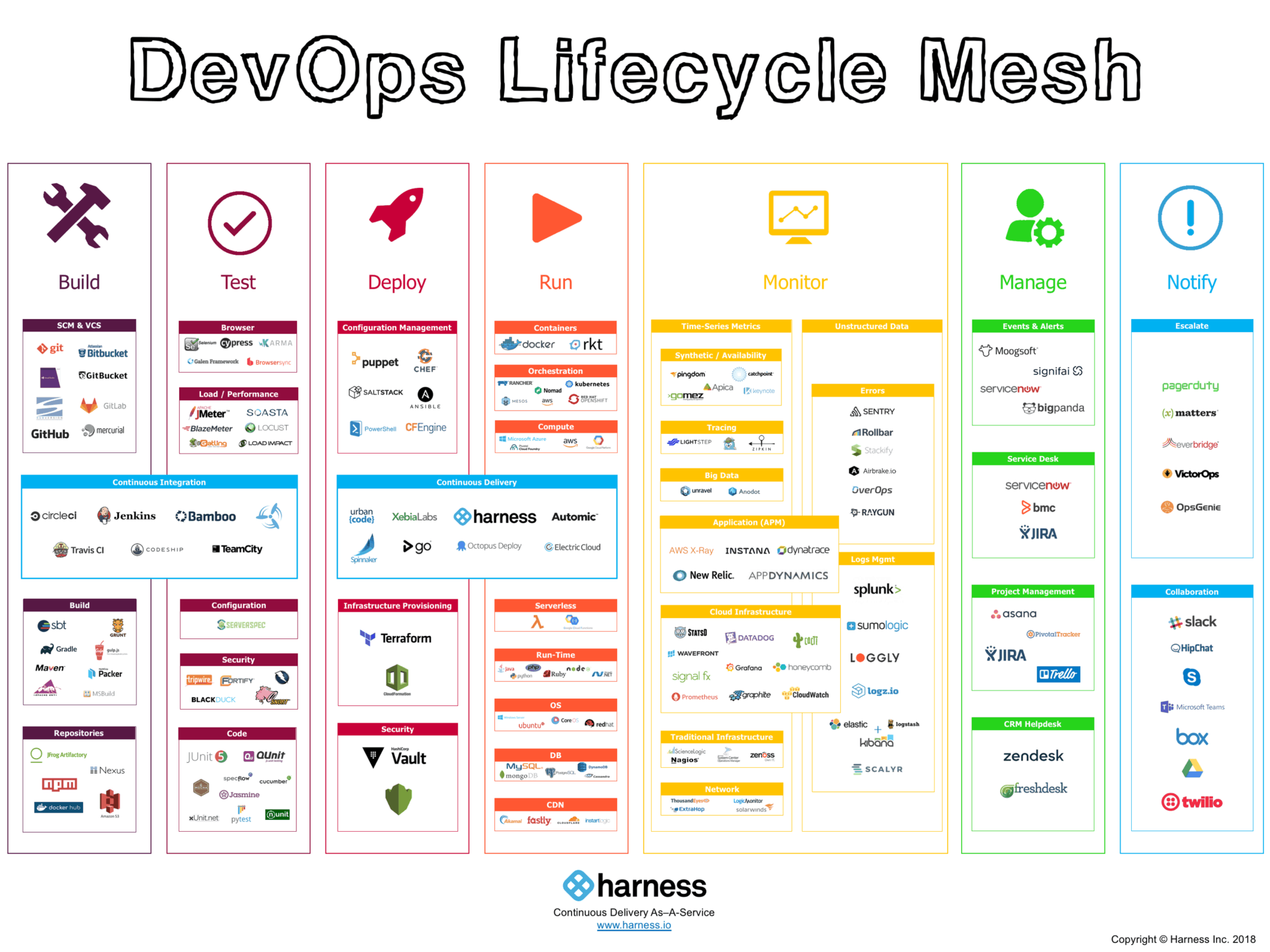DevOps has revolutionized software delivery with a staggering 47% of software development teams adopting it globally. But a lot of organizations are now suffering from a DevOps-related hangover: tool sprawl. Engineering teams are finding themselves amidst a tangled mess of disjointed tools after investing significant time and money in various tools.
While flexibility to choose tools is great, unchecked tool sprawl causes major headaches. It leads to fragmented processes, security gaps, bloated costs, slower velocity, and drained productivity- everything DevOps has claimed to solve. So how do you gain control over a sprawling DevOps toolchain?
Let’s find out:
Top 5 Strategies To Limit DevOps Tool Sprawl Through Consolidation
Here are 5 proven consolidation strategies to limit DevOps tool sprawl:
#1 Unite Application Security Tools
Modern applications are assembled from many components and microservices, massively expanding the potential attack surface. Most teams try to secure these complex systems using a patchwork of SAST, DAST, SCA, and other app sec tools.
While more tools may seem more secure, it actually creates gaps. Developers must jump between disparate UIs and policies. Visibility is fractured between siloed systems. And it’s impossible to take a comprehensive approach to application security.
The solution? Consolidate these tools into a unified application security platform. This eliminates tool sprawl while giving you unified visibility and policies. With a consolidated view, it becomes far easier to embed security earlier into the software delivery lifecycle.
#2 Centralize Artifact Management
As developers join new projects, they naturally adopt new tools to store dependencies, artifacts, container images, and other digital assets. Soon you have artifacts spread haphazardly across Maven, GitHub, S3, Docker Hub, on-prem servers, and beyond.
This level of sprawl leads to fragmented processes. Developers waste time hunting down artifacts and maintaining custom scripts to move them around. Automating deployments becomes increasingly difficult. And naturally, you lose visibility into components used in production.
To fix this, Talent500 experts recommend centralizing artifact management into a single repository with universal package management. This eliminates disjointed scripts and processes. Notably, a unified system also makes it easy to scan all artifacts for security pre-use.
#3 Consolidate Monitoring Tools
In complex microservices environments, teams often use dozens of monitoring tools to maintain availability and quickly resolve issues. But this very multitude of tools creates data silos, making it hard to trace transactions across these services.
More tools equals more alerts. But more alerts don’t equal better insights. Beyond high licensing costs, “alert fatigue” leads engineers to miss critical warnings in the noise, thereby downplaying the ulterior motive behind employing them.
The solution is to consolidate monitoring tools into a unified observability platform. This must connect metrics, logs, and traces, eliminating blind spots between systems. AIOps can then reduce alert noise and quickly surface the most critical alerts.
#4 Streamline CI/CD Pipelines
Many teams use a hodgepodge of CI/CD tools for building, testing, and deploying their applications. Often adopted ad-hoc, these tools rarely work smoothly together. Managing disparate pipelines strains engineering resources without any reasonable benefit, often ending up as an unaddressed issue.
The result is slow, fragmented delivery processes. Code changes get bottlenecked waiting for approval and deployment. Without cross-pipeline visibility, it’s impossible to optimize release workflows, amounting to larger issues with time.
The best solution is to connect pipelines into a unified CI/CD platform. This eliminates cross-system latency, allowing efficient code flow. End-to-end visibility also makes it easy to optimize pipelines and accelerate release velocity, bypassing the previously discussed limitations.
#5 Standardize Source Control Tools
In larger enterprises, different teams often use their preferred source control tools – GitHub, GitLab, Bitbucket, etc. While choice is nice, this creates major collaboration friction as the team size and complexity grows.
In such scenarios, developers often struggle to share code and practices across teams. Orgs lose out on single source-of-truth version control. Changes get siloed, slowing release cycles, rendering DevOps methodology inefficient.
To maximize efficiency, standardize on an organization-wide source control platform. This makes it seamless for developers to collaborate across team boundaries. Consolidated repositories also help enforce consistent security policies.

Moving Forward with Consolidation
While niche tools will always be needed, consolidating core systems like security, artifacts, monitoring, CI/CD, and source control brings massive gains. Unification significantly reduces complexity and tool overload which is a must for organizations.
This in turn improves oversight, security, automation, and developer productivity. Just as importantly, a unified DevOps platform provides a single, consistent experience vs. constant context switching.
Consolidation does require upfront effort and organizational change management. Start by auditing your tools and identifying high-impact candidates. It is recommended to phase out disparate systems over time in favor of integrated platforms. The long-term DevOps productivity gains achieved are well justified against the time and effort spent in this process.
Remember, developers want to ship code, not manage tools. Providing a streamlined toolchain allows them to focus on innovation versus infrastructure. By tackling tool sprawl today, your teams can continue delivering value long into the future.
Strategies for Preventing DevOps Tool Sprawl
While consolidation is critical for organizations already dealing with tool overload, prevention is equally important. The last thing you want is to end up in the same mess again down the road. Here are 3 keys to stopping tool sprawl before it starts:
Do Your Diligence: Carefully evaluate each new tool using criteria like integration, security, extensibility, and ease of use. Don’t just get seduced by shiny features.
Seek Consolidated Solutions: Look for platforms that combine multiple capabilities into a single solution. All-in-one systems help minimize tool bloat.
Create Governance: You must institute policies and processes to control tool adoption. Require business cases, risk analysis, and architecture reviews before adopting new tools.
Avoiding the Pitfalls of Consolidation
While a consolidated toolchain has many benefits, platform consolidation also comes with risks. Here are three pitfalls to avoid on your consolidation journey:
- Don’t compromise on must-have functionality. Retain critical niche tools that provide essential capabilities.
- Avoid vendor lock-in. Make sure consolidated platforms use open standards and make it easy to switch vendors.
- Maintain platform openness. Consolidated tools should integrate smoothly with necessary specialty solutions.
By keeping these principles in mind, you can tap the massive benefits of consolidating core systems while avoiding the potential downsides of oversimplification.
The DevOps Toolchain: Friend and Foe
In the end, your DevOps toolchain is both friend and foe. Used properly, it supercharges software delivery. But uncontrolled sprawl creates complexity, fragility, and inefficiency.
The solution lies in ongoing governance, diligent platform evaluation, and proactive consolidation. With a thoughtful DevOps toolchain strategy, your developers can continue innovating and delivering value for the long haul.
Looking for a high paying remote opportunity in DevOps?
Sign up on Talent500 to find your dream DevOps job now!






Add comment